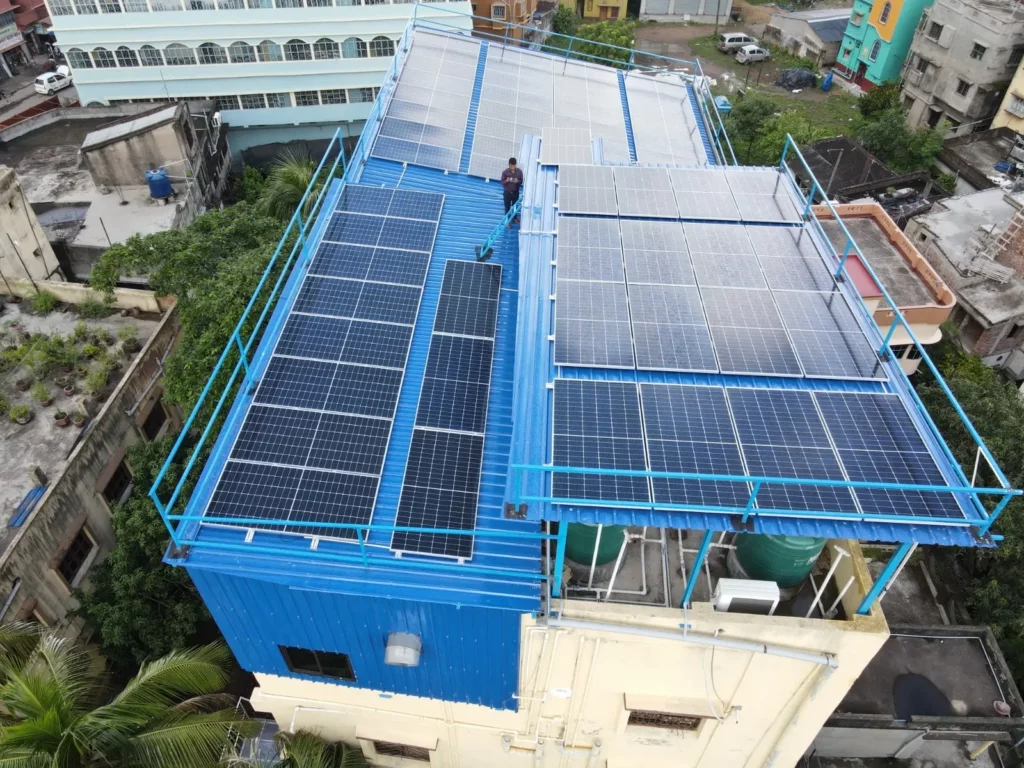Solar panels are like magic money savers. They use sunlight to create power, shrinking those big electricity bills. They’re super reliable because they don’t rely on energy companies and their changing prices. When homes and businesses use solar panels, they don’t need to use as much expensive energy. It’s like catching free sunshine to keep wallets happy.

Step 1: Types
There are several types of solar panels, each with its own design, materials, and applications. The main types of solar panels include:
Polycrystalline Solar Panels: These panels are made from multiple crystal structures and are generally less efficient than monocrystalline panels. They are cost-effective and suitable for installations where space is less of a concern.
Monocrystalline Solar Panels: These panels are made from a single crystal structure, usually silicon. They are known for their high efficiency and space-efficient design. Monocrystalline panels also exhibit better performance in low-light conditions. Their longevity and durability guarantee long-term savings on electricity bills.
Bifacial Solar Panels: Bifacial panels can capture sunlight from both the front and rear sides, increasing their energy generation This dual-sided light absorption increases energy generation potential. It can generate electricity up to 25% extra compared to other solar panels. Bifacial panels also exhibit better performance in various lighting conditions, ensuring consistent energy production.
Expert Recommendation: A Bifacial solar panel is the world’s latest technology solar PV module that is beneficial for smart homes, commercial buildings, and more.
Step 2: Capacity
Off-Grid Solar System – The capacity of solar panels in an off-grid solar system determines the system’s energy generation potential. It’s typically measured in watts (W). The panel capacity directly impacts how much energy can be harnessed from sunlight and stored in batteries for use when the sun isn’t shining. To make it simple, an off-grid solar system necessitates solar panels that are twice the capacity of the battery.
On-Grid Solar System – In an on-grid solar system, the capacity of solar panels influences the system’s electricity generation potential. This capacity, measured in watts (W), determines the amount of solar energy converted into electricity for immediate consumption or feeding back into the grid. The panel capacity can be easily comprehended by examining the electricity bill. The solar panel’s kilowatt capacity is equal to the monthly electricity bill. For Ex- If your electricity bill is Rs. 1000 every month, then you will need 1 kW on the grid solar system to eliminate your electricity bill.
Step 3: Price
Factors influencing solar panel price include panel type, brand, efficiency, and installation costs. Monocrystalline solar panels, known for high efficiency, can be pricier than polycrystalline. Bifacial panels and advanced technologies may command premium costs.
Step 4: Brand
Choosing the right solar panel brand involves thorough research. Start by considering your budget, energy needs, and available space. Look for established brands with a proven track record and positive customer reviews. Assess panel efficiency, warranty terms, and durability. Check if the brand has local support or service centers. Compare prices per watt to ensure cost-effectiveness. Solar panel efficiency and technology advancements also matter.
Step 5: Review
Consumer reviews of solar panels vary widely based on brand, model, and user experience. Positive feedback often highlights reduced electricity bills, environmental benefits, and long-term savings. However, negative reviews occasionally mention installation challenges, compatibility issues, or unexpected efficiency drops. It’s essential to research extensively and evaluate warranties, and certifications along with comparing multiple brands, which can help make an informed decision about the right solar panel for one’s specific requirements and budget.
Conclusion
Discovering the ideal solar panels for effective electricity generation is akin to finding magic money savers. Bifacial Solar Panels use sunlight to help make electricity bills smaller. They’re reliable, and they don’t care if energy prices go up and down. Bifacial solar panels offer increased energy efficiency by capturing sunlight from both sides, enhancing power generation. This benefits homes and businesses by maximizing energy output within limited space, reducing electricity costs, and promoting sustainability. Their versatility and improved performance make them an optimal choice for optimizing solar investments for homes and businesses. Consulting reputable suppliers and factoring in government incentives can help you make an informed decision about the best solar panels for your budget, energy goals, and brand.
